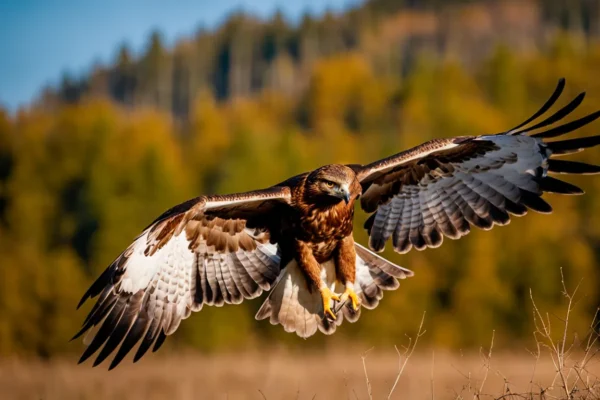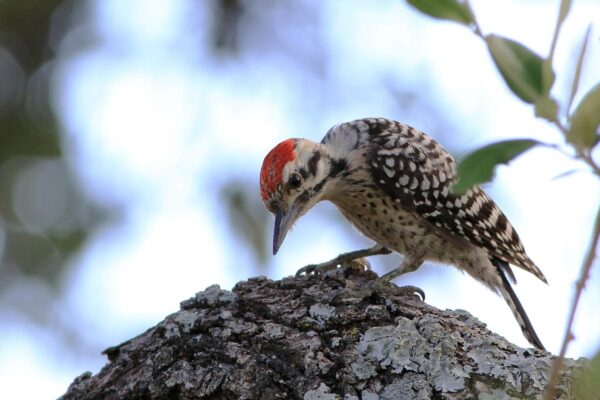You’ve undoubtedly heard of the mockingjay if you’ve read The Hunger Games or seen the films. In the series, this unusual bird has a significant symbolic meaning. However, is the mockingjay a genuine bird species or only a work of fiction?
The mockingjay is not a genuine bird, to quickly respond. It does not exist in nature and was created by author Suzanne Collins for her dystopian novel trilogy.
Mockingjay roots and history will be detailed in this article. We’ll examine Suzanne Collins’ bird’s inspiration, symbolism, and meaning. The mockingjay may have been modeled from many bird species.
Discover the meaning and legend of the mockingjay by reading on, regardless matter whether you’re an avid reader of The Hunger Games or just interested in this strange imaginary bird.
The Mockingjay’s Origins And History
The Mockingjay is an intriguing monster that has captured the attention of both readers and moviegoers. It is a key character in Suzanne Collins’s widely read Hunger Games series. Is the Mockingjay, however, a genuine bird? Let’s explore the history and genesis of this fabled bird species.
The Hunger Games’ Hybrid Birds
The Mockingjay, a hybrid bird in The Hunger Games’ dystopian society, is the result of genetic engineering a male jabberjay and a female mockingbird. During the uprising, the Capitol first used the jabberjays as spies to listen in on the rebels.
But the rebels rapidly turned the tables on the Capitol, supplying false information to the jabberjays so they could no longer be used as monitoring instruments. The jabberjays were thus left behind and ultimately crossed with mockingbirds in the wild to become the Mockingjay.
Greek mythology influenced
Suzanne Collins was inspired by Greek mythology for The Mockingjay. Philomela, a Greek princess who became a nightingale, is associated with the “mockingbird”.
The themes of revolt and resistance seen in The Hunger Games trilogy are echoed in Philomela’s narrative, which is one of tenacity and the strength of voice. Similar to the nightingale, the mockingjay rises to prominence as a symbol of resistance and hope against injustice.
Interpretation And Allegory
The Hunger Games series features The Mockingjay as a potent emblem. It expresses the spirit of revolt and stands for the opposition to the repressive Capitol. The story’s protagonists who adapt and live in a tough environment are symbolized by the bird’s capacity to imitate the sounds of its surroundings.
The famous Mockingjay pin that the main character, Katniss Everdeen, wears serves as a sign of inspiration for the rebels.
Despite being a fictitious character, readers are moved by the Mockingjay’s symbolism, which serves as a reminder of how important it is to resist injustice and fight for freedom.
Actual Birds That Might Have Served as Mockingjay’s Model
Regarding the adored mockingjay character from Suzanne Collins’s “The Hunger Games” trilogy, viewers sometimes ponder whether or not a genuine bird of that kind exists. The mockingjay is a fictitious creature that has no specific counterpart, although it may have been inspired by a number of bird species.
Let’s examine a couple of them in more detail:
The Mockingbird in the North
In North America, one of the most well-known bird species is the Northern Mockingbird (Mimus polyglottos). Because of its amazing capacity to imitate other birds’ songs, it’s sometimes thought of as a possible real-life equivalent of the mockingjay.
These birds can replicate the cries of over 200 other species thanks to their amazing song repertoire. The melodious performances of the Northern Mockingbird are not restricted to other birds; they can even mimic noises like human whistles and automobile sirens.
It makes sense that they have captured the interest of both writers and readers.
Darwin’s Finches
The Galapagos Islands-native Darwin’s finches are another species of birds that could have impacted the development of the mockingjay. These finches have a broad variety of beak forms and sizes. Charles Darwin notably observed them during his journey aboard the HMS Beagle.
Their ability to adapt to the many food sources on the islands is facilitated by their variety. Parallel to this, the mockingjays from “The Hunger Games” television series are renowned for their capacity for environmental adaptation and survival.
Darwin’s finches and mockingjays are not directly related, but their distinctive qualities make them a notable source of inspiration.
The Bird of Lyrebird
One bird that is often mentioned in conversations about the mockingjay is the Australian native lyrebird. The lyrebird is well-known for its remarkable mimicking abilities. It can replicate a variety of sounds, such as other birds’ cries, human voices, and even mechanical noises.
The name “lyrebird” comes from the complex tail of the male bird, which also resembles a lyre. The development of the mockingjay, with its unique song and look in the “Hunger Games” series, may have been inspired by this bird’s ability to replicate a variety of sounds and its remarkable appearance.
It’s crucial to keep in mind that the mockingjay is a mythical bird, even if it may have been inspired by some actual bird species. However, the presence of these birds and their amazing capacity to imitate, adapt, and thrive in a variety of contexts gives readers’ conceptions of the mockingjay a hint of realism.
The Hunger Games’ Mockingjay
A mythical bird named The Mockingjay has a major part in Suzanne Collins’s well read Hunger Games novel series. The botched attempt to genetically modify the jabberjay, a bird used for warfare, prompted the Capitol to produce this unusual hybrid species of bird.
In the totalitarian nation of Panem, the mockingjay—so named because of its unusual ability to imitate human sounds—became a symbol of hope and revolt.
Initial Manifestation of the Mockingjay
The first book of The Hunger Games trilogy contains the first mention of the mockingjay. Readers are introduced to it by Katniss Everdeen, the main character, who finds a mockingjay nest in the woods close to her District 12 house.
The bird’s exquisite singing voice and ability to mimic tunes captivate Katniss. She had no idea at the moment how significant a symbol the mockingjay would become in her campaign of rebellion against the Capitol.
The Mockingjay Symbol And Katniss
As Katniss takes on the role of the rebel leader against the Capitol, her bond with the mockingjay becomes stronger. The rebels take up the mockingjay as a symbol of resistance and solidarity. As Katniss becomes well-known as the “Mockingjay,” her recognizable Mockingjay pin becomes a source of inspiration for Panem’s downtrodden populace.
The rebels are inspired and given the courage to fight for a brighter future by the bird’s ability to resist being held captive and its defiance of the Capitol.
Mockingjays Within The Uprising
A crucial part of the uprising against the tyrannical Capitol rule is played by the Mockingjays. The rebels see great value in their capacity to imitate human noises and convey messages.
During fights, mockingjays are employed to encourage the soldiers, communicate with one another, and deliver vital information. The rebels’ spirits are raised by their presence and their rebellious songs, which also serve as a reminder of the human spirit’s resiliency and tenacity in the face of hardship.
In The Hunger Games trilogy, The Mockingjay represents the strength of resistance and optimism. It serves as a reminder that there is always a potential for change and a glimmer of optimism, even in the worst of circumstances.
The Mockingjay’s transformation from a botched experiment to a rebel icon is proof of the human race’s unbreakable spirit.
The Mockingjay’s Enduring Impact
The mythical bird from Suzanne Collins’ Hunger Games trilogy, The Mockingjay, has had a big influence on modern culture. Millions of admirers worldwide have been captivated by its depiction in the novels and their following cinematic adaptations.
The Mockingjay is a potent and lasting symbol in many facets of society because of its distinctive qualities and meaning.
In Popular Culture
Following the publication of The Hunger Games novels and films, the Mockingjay has emerged as a legendary figure in popular culture. There are Mockingjay images everywhere, from tattoos and fan art to products and apparel.
Its widespread appeal is evidence of the story’s compelling quality and the deep affinity viewers feel for the people and ideas the show explores.
The music business is another area where pop culture has been influenced by The Mockingjay. Popular singers have further cemented the Mockingjay’s position in modern culture by including allusions to it in their songs.
Audiences connect with the bird’s defiant and resilient attitude, which also acts as a source of inspiration for many.
Applies To Branding And Marketing
Businesses and organizations utilize the Mockingjay’s image in branding and marketing due of its popularity. The Mockingjay insignia represents courage, tenacity, and resistance, which are associated with their products.
For instance, in their commercials, a sports company can include the Mockingjay to represent strength and tenacity. Similar to this, a social justice group may utilize the Mockingjay as a representation of empowerment and resistance for their cause.
Scientific and Educational References
Despite being a fictitious bird, real-life bird species served as influence for the design of the Mockingjay. The bird is a hybrid of two real bird species: the mockingbird and the jabberjay.
Native to North and South America, mockingbirds are renowned for their ability to replicate the sounds of other birds. In The Hunger Games, the Capitol used genetically engineered jabberjays to spy on humans.
Even if the Mockingjay itself is a fictional character, the tale is made more realistic and nuanced by the use of actual bird species in its construction. By combining fiction with truth, readers and viewers may relate to the Mockingjay on a deeper level.
In addition, the Mockingjay has been compared as a metaphor in talks about science and education. Numerous settings, such as literature, psychology, and sociology, have examined its symbolism. The Mockingjay’s depiction and significance may illuminate resistance, perseverance, and symbolism.
In summary
Though it may not be genuine, the mockingjay has had a significant impact on our culture. Suzanne Collins’s fictitious bird has grown to be a potent symbol of hope and revolt.
Fans of The Hunger Games series are still inspired by it, and it appeals to a larger audience as well. Mockingjays are thus unlikely to be seen sitting on trees or on the covers of ornithology textbooks, but they will probably continue to be a well-known symbol in popular culture for some time to come.




![30 Birds With Red Legs [Images + IDs]](https://birdsology.com/wp-content/uploads/2023/05/50385467167_9a80380240_b-600x400.jpg)

